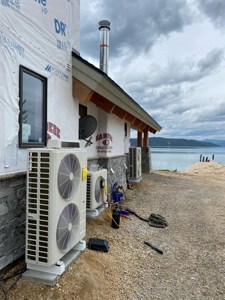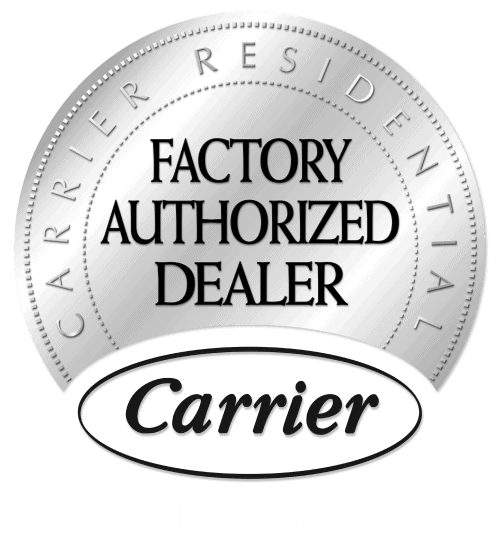One of the difficulties some homeowners may have with central air conditioning is figuring out how to control it. More times than not, the HVAC unit in your central air conditioning system might provide inconsistent levels of hot and cold air to one room in the house over the rest, or might not quite work towards the settings you’ve selected. Fortunately, there are many things you can do to fix this problem.
Central air conditioning works by circulating cool air via a return and supply duct system to make your home cool and comfortable, and their seasonal energy efficiency ratio usually indicates this cooling output.
No matter how simple it may appear, however, many factors come into play to achieve the proper temperatures indicated by settings, which means it’s important to have a proper control system. This article covers all of the answers you need to the question, “how can I control my central air conditioner?”, so read on to learn how to maximize your central unit and save energy costs.
Best Ways to Control Your Central Air Conditioning
You likely have one or more central air conditioners in your apartment. These units may have more than the expected off-and-on switch and include auto-timer and fan speed features. So how do you tune these options to minimize cost and energy usage while cooling your home?
Here are some tips to help you control your central air conditioning to provide the cooled and warm air you deserve.
Know Your Fan Options
Your central cooling systems might have three fan settings; low, medium, and high. The high option is primarily for when the home’s inside temperature is hot. However, it is best to keep the fan low when the humidity is very high for a more comfortable setting.
Always Inspect Your Air Filter
Your air filter is an important component of central air conditioning units which determines its functionality and energy usage. If the air-conditioning unit is dirty or dusty, your air conditioner won’t function as it should. This means you would spend much more money on air conditioning to get less effective cooling.
Many of these modern units have indicators for when the filters are dusty. But some don’t; hence, you should regularly check the state of your filter. Check more frequently during summer and at least once a month.
Control The Direction of the Vent
The direction of your air vent affects air circulation in your home. If the vents are pointed towards one side of the room, move the ducts to the center of the room. This way, the cool air moves outward into the room.
Note, if the vent points to the back of a curtain, couch, or any form of obstruction, energy will be wasted as the room won’t be cool even though the air conditioner still works. Hence, you must let the vent face the open area of the room.
Set Your Timer
Nothing beats coming home from a hot day and meeting a cool home, but running the air conditioner while away from home sounds like lots of energy bills. There is a way around this if you install a timer. Look at the timer and set the number of hours you want the air conditioner to be off.
For instance, say you leave the house every day at 8 AM and return at 5 PM, you can set the timer so that it switches off immediately when you are out of the house and the air conditioning turns on thirty minutes before you arrive.
Some timers work differently. Instead of measuring the number of hours you want the central air conditioner off, it measures how long you want it operational. Either way, you’ll need to establish the optimal amount of running time for your AC.
Note that although several factors might affect how you can use a timer, one of the most important is having pets. If you set your timer to switch off while you are not around till a few minutes before you come, you might have to spend quite some time in a very uncomfortable household. Make sure you adjust your timer settings while factoring in your pet’s comfort level as well.
Use the Smart Function, Energy Saver, or Auto
You can cool your room using functions such as auto, smart fan, or energy saver. While not all units might have these options, for the ones that do, you can adjust the settings to optimize your central air conditioning run time for energy savings and optimal temperature balance. You’ll likely need to experiment with these features to find the best settings for your household, but it can be well worth the effort for automatic adjustments to your indoor comfort levels.
Use a Smart or Programmable Thermostat
Installing a programmable or smart thermostat is one of the most dependable ways to control your central air conditioning system since it’s extremely accurate at setting the temperature to the degree you want it to be.
Compared to traditional thermostats, it’s a remarkable option with several innovative features available. If you are interested in automation, remote access, and monitoring your central air conditioning system from anywhere, then you should get a smart/programmable thermostat. Smart thermostats can also be integrated into your smartphones to enable control from any location, so you can set your ideal indoor settings in advance, even when you’re on the go.
How Low Should Your Central Air Conditioning Go?
According to the department of energy in the US, the recommended temperature for central air conditioning is 68 Fahrenheit when you are at home and higher when you leave.
However, the 68 F prioritizes energy efficiency and savings, not indoor comfort. If this setting is not comfortable enough for you, consider getting ceiling fans for a more effective way to save costs on energy consumption while staying cool.
Ideally, central air conditioning will automatically help you save money by reducing energy usage and also reducing your carbon footprint. However, before installing a new system, it is important to know how to control it properly to ensure that it’s running efficiently.
Central Air Maintenance in Spokane WA
Hurliman Heating and Air Conditioning specialize in central air conditioner repair and service for residential and commercial properties in Spokane. We are a family-owned business with over 30 years of experience, and our air conditioning contractors can help you get the best out of your central air conditioning and heat pump systems.






